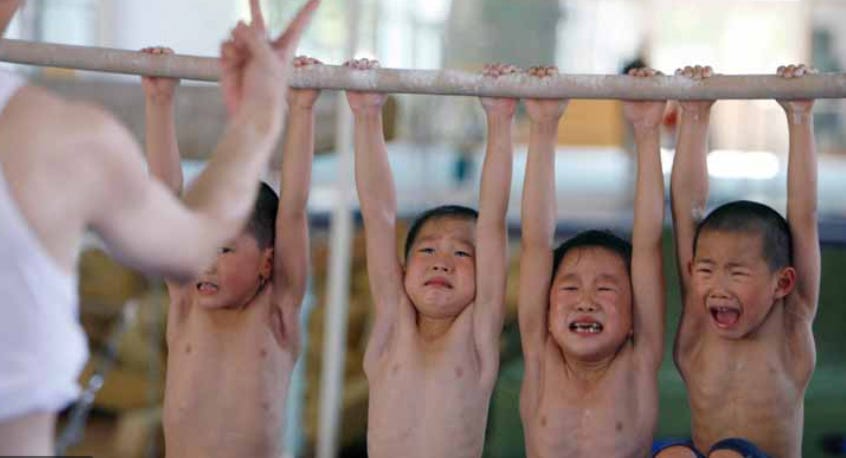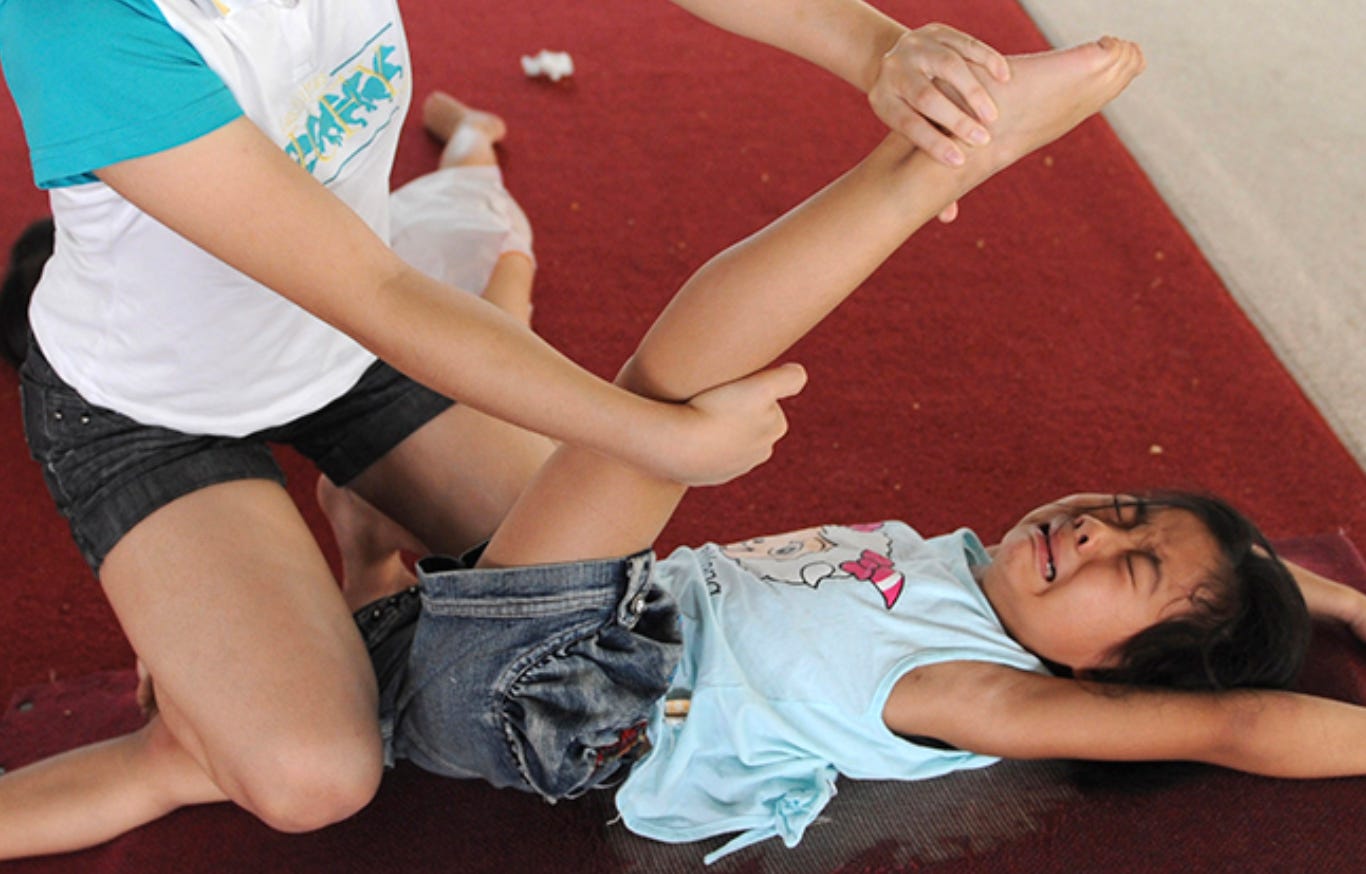Simone Biles’ decision to not compete at the Tokyo Games has been described as a struggle against mental illness. But it’s not. Her decision to stop is because she has come to her senses. Elite female gymnastics is not a sport but a form of abuse that pressures youngsters from a very young age into doing tricks that are dangerous and downright life-threatening. And Biles’ stunts are the most hazardous ever executed by a gymnast. This is why, to me, her decision to stand down is a long-overdue sign of mental health, not an illness.
My concern about female elite gymnastics began years ago after I spent time at a gym writing a magazine article about a world-class elite gymnastics facility that had churned out several Olympic gold medalists. The name of the gym is not important, but what I learned was. For several days I hung out taking notes, asking questions, and observing what went on. They took on girls as young as seven, if they showed promise, and pushed them hard in a race against puberty, it was explained to me. Boys, by contrast, must be fully developed before they can perform grueling tricks like the Iron Cross, but once a girl crosses that puberty threshold, she acquires extra body fat. “Then they can’t do the tricks,” said the female coach.
This arrested development is helped along by an extreme regimen of exercise and diet which often postpones physical development.
These little girls with elite potential are placed into specialized gyms and spend their childhoods working like farmhands six days a week, removed from their friends and regular schooling. They are motivated by a combination of rewards, punishments, shame, or peer pressure. I watched a coach make an 11-year-old repeat a dangerous trick perfectly on uneven bars, over a moat of foam rubber, two dozen times before she was allowed to go home. If she made a mistake, she had to start again.
Obviously, this drives many of them out of the sport as they mature. An example is a talented young teen gymnast named Katelyn Ohashi who beat Simone Biles back in 2013 with an extraordinarily difficult balance beam routine. Then she suffered a series of injuries, along with incidences of body shaming by her coaches to keep her weight down, so she stunned the gymnast world by suddenly quitting. Her departure was also a sign of mental health, not the opposite.
“I've said before, ‘gymnastics is abusive,’ but now I know it's not the sport that's abusive—it's the culture that was created and accepted and normalized,” she said in an interview. “College gymnastics has an entirely different vibe. It’s not about the gold medal—we’re not trying to go to the Olympics—we know this is it for us.”
Considering this context, watch below this short video of Simone Biles’ signature balance beam routine and dismount and ask yourself how many injuries did she sustain mastering this? And how many others have fallen or will be injured emulating her? And should such tricks, without spotters and harnesses, be legal?
Danger and scanty costumes are why female gymnastics get huge audiences in the Olympics. The men, by contrast, aren’t clad in bikinis and all have reached maturity by the time they reach the Olympics because of the strength involved.
Finally, Simone Biles has stopped graduating to routines that are progressively more dangerous. Of course, other sports push limits too, but the difference is that the fastest swimmer or runner, or tennis player in the world doesn’t have to risk breaking his or her neck to win medals. They win by being taller or stronger and, in the case of contact sports, wearing padding, helmets, and mouthguards to protect themselves from injuries. Female gymnasts, by contrast, are without protection. They must remain small and compact in order to execute gravity-defying tricks performed over exceedingly hard surfaces that, if impacted due to a fall, can cost a limb or a life. In 2019, an All-American college gymnast Melanie Coleman, 20, from Connecticut, died after slipping off the uneven bars during practice and suffering a fatal spinal cord injury.

Simone Biles refused to compete at the Tokyo Games because she said she had the “twisties” or a temporary mental lapse mid-trick which can result in a fall. Some applauded her courage for stopping while one Texas politician, likely a couch potato, even called her a “national disgrace” after she quit. But Simone is the canary in a coal mine of broken minds and bodies in gymnasia around the world who are exploited by a ruthless gymnastics establishment. The sport must change.
In fact, elite female gymnastics training is unhealthy and studies* (see link below) reveal that years of intense exercise and performance stress take their toll. There are concerns about retarded bone growth, reproductive capabilities, and other physical dangers, not to mention the psychological damage. How else do you get little kids to attempt scary maneuvers in the air? “We have a psychologist on staff to bring them around when they don’t want to do the tricks,” explained the coach to me years ago.
What do the parents say about this, I asked? “The parents aren’t allowed in the gym. They feed them, they drive them and we raise them,” she said.
Obviously, the absence of parental oversight represents the biggest hazard facing young athletes because it allows them to be pushed into dangerous behavior, not to mention allowing pedophiles to enter the picture. Simone Biles, for instance, was sexually abused by the notorious pedophile, Larry Nassar, who abused untold numbers of young gymnasts. Even worse, are the gymnastic “factories” that grind up children in countries like China or Russia in order to crank out world champions for the greater glory of their dictatorships.
Frankly, the world shouldn’t be surprised. Remember the world’s first gymnastic superstar, Nadia Comaneci of Rumania? In 1976, at the age of 14, she became the first gymnast to be awarded a perfect score of 10.0 at the Olympic Games for seven events and won three gold medals. Years later, police reports revealed she was abused and starved by her coach from the age of six onwards.
Any risky sport involving young people — like child labor in the past — should be heavily regulated or banned. Drug and pedophilia scandals have dogged the hockey and soccer worlds and this year, Alberto Salazar, the famous Nike-backed coach who helped revive elite American distance running, was suspended for doping and other unseemly offenses and declared permanently ineligible by the U.S. Center for SafeSport.
On top of those dangers, young athletes also face psychological damage from the media on top of the fact they have been conditioned to become perfectionists, a debilitating mindset. Tennis champion, Naomi Osaka, left the French Open this year because of the “invasive and dispiriting questioning from the news media” and, like Biles, disappointed many with her performance in Tokyo.
Fortunately, she and Biles are superstars who are starting to push back against the insanity of big-time sports. And both have dispensed essential advice to females around the world. After Osaka dropped out of the French Open she famously said: “It’s O.K. not to be O.K.”
And at a press conference, Biles spoke plainly when she said that "we have to protect our minds and our bodies.”
My newsletters will arrive in your inbox Monday and Thursday mornings
Note: ** This is a paper on the negative effects of excessive exercise and dieting on female gymnasts’ development.








It seems silly to devise a sport where normal, natural growth is an impediment to success. There are surely ways for women's gymnastics to design itself in a way that would allow girls to grow into women and utilize that growth to show their skills and talents. If not, simply do away with it.
The role of science in the development of athletes to go higher, faster, stronger, further has quickly brought us to face the reality that there are limits that the human body imposes. Trying to exceed those limits becomes dangerous. Will the popularity of football survive the reduction and removal of contact involving the head?
The Cirque du Soleil is probably a better venue for acrobatic extremes especially if you are double jointed !